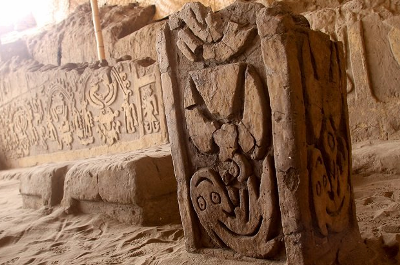The Nistarim Zadikim or Lamed Vav Zadikim (ל"ו צדיקים) - are the 36 Just - or Sanctified People, a notion rooted in the most mystical aspect of Judaism.
In gematria, Hebrew esoteric science, Lamed is the letter that represents the number 30 and, Vav, represents the number 6.
Also, 36, means "double life", being double of 18, which represents "life".
Zadikim is the plural of "Righteous One". Thus, the "Sanctified Persons" are called "The Thirty-Six".
They are also called Zadikim Nistarim: "Hidden Righteous Ones" or "Hidden Saints".
According to the Jewish tradition of mystical Hasidic Judaism, there are 36 righteous men [human beings] whose role in life is to validate the existence of the human race under the eyes of God.
The identity of these people is unknown and when one of them has fully accomplished his mission in this world, he dies—and his place is immediately taken over by someone else.
The chosen one is, necessarily, someone who must possess the character for the status of Zadikim. However, if God does not find on Earth someone good, pure, humble enough to take the place of the dead Zadikim, then, the world could end at the same moment.
The Lamed-Vav Zaddikim are called Nistarim, "the hidden ones" or, in free translation, the unknown ones.
In folkloric accounts, the condition of Nistarim, to act anonymously, is a choice, a self-imposition of the chosen one that, even if he is not concious of his position, uses his mystical powers to prevent disasters, protect threatened or, persecuted people.
In everyday life, they live discreetly, in condition of little prominence in the community. On rare occasions, one of them is discovered by accident. The secret must not be revealed.
The Zadikim themselves are unaware of each other's status, and if a person claims to be one of the 36, that person is surely lying; because the main virtue of a Nistarim is anavah [humility].
A humility so sincere that the Nistarim cannot believe that he himself is one of the 36 Righteous Ones.
These 36 Righteous Ones, living on Earth, are a kind of guarantee of the salvation of the world before the judgment of God.
It is because of them that the Creator allows the existence of Humanity that degenerates into barbarism of customs.
This situation refers to the biblical episode of Sodom and Gomorrah, when God promises Abraham that he will preserve the city of Sodom if he finds at least 10 righteous men there.
The myth of the Zadikins holds the possibility that every person in this world can be one of the 36 Righteous Ones and can act like one of them, practicing mercy and prayer for salvation, for the good of all Humanity.
Tradition also says that one of these 36 Righteous Ones could potentially be the Jewish Messiah if the world is ready for his identity to be revealed. The Righteous live and die like ordinary people.
The belief in the 36 Just Ones fills, to a large extent, the cult of saints and other personalities in the Judaism.
Man does not need heavenly intercessors since the world receives Mercy through the actions of the anonymous, unknown and never revealed Righteous Ones.
Anyone can be one of them: the author of this text; the reader or even someone whom everyone considers completely devoid of any merit.
This is the legend of the 36 righteous men. If you like the content, comment what you think: is it a legend or a hidden truth?
LEGENDS: THE WEIGHT OF THE WORLD
There is an ancient Jewish belief concerning the Lamed Vav Tzadikim (or the 36 good people).
They are also known as Lamed Vavniks or, in another spelling, Lamed Wufniks.
It is said, over millennia, that there are - and always have been - thirty-six men in the world whose mission is to justify human existence before God. They are the Lamed Wufniks.
They don't know each other and are ordinary people who sacrifice themselves for the benefit of others Unknowingly. The Lamed Wufniks are the secret pillars of the universe. If not for them, God would annihilate all mankind.
Unbeknownst to them, they prevent harm from happening to those around them. Without ever standing out from the crowd, without ever losing your anonymity. Without realizing it, they are our saviors.
They are the proof we offer to God that we can be good and pure and therefore deserve his love and mercy. They are the scapegoats of humanity.
If, eventually, a Lamed Wufnik realizes his importance, his death is certain: because no man can support even 1/36 of the weight of the world.
When one of them ascends to heaven his state is of total freezing and God needs to warm him for a thousand years before his soul can live in Paradise.
And it is said that some remain so inconsolable towards humanity that even God cannot warm them. So, from time to time, the Creator advances the Last Judgment clock by one minute.
In the 7th century, Jews from Andalusia (a region in Spain) venerated a teardrop-shaped rock. They believed that the rock was the soul of an unknown Lamed Wufnik petrified by grief.
SOURCES
IMAGENS: @nightcafestudio #AI




























